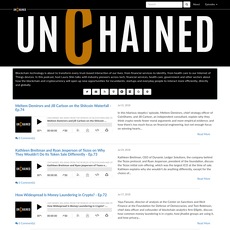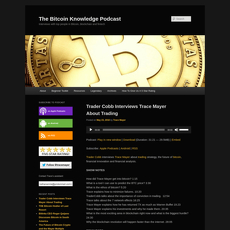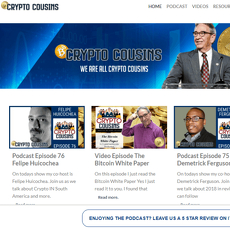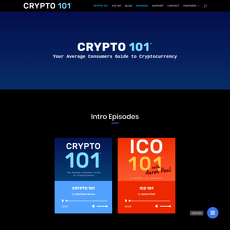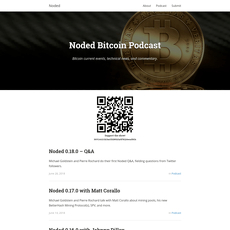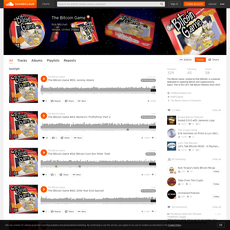Chat With Traders Review
Chat With Traders
chatwithtraders.com
Chat With Traders Review Guide: Everything You Need to Know (with FAQs)
Are you trying to get better at trading and wondering if Chat With Traders is actually worth your time—or just another podcast that sounds smart but doesn’t move your PnL?
I hear that all the time. You listen to hours of “wisdom,” feel motivated, take notes… then your next 10 trades look exactly like your last 10. Or worse, you copy a tactic someone mentioned without testing it, and your account takes the hit.
What’s going wrong (and why it’s not your fault)
The problem isn’t that you’re lazy or not “smart enough.” It’s that trading content often overloads you with ideas and zero execution path. A few patterns I see over and over:
- Information overload: Too many voices, not enough filtering. Research shows excess info can reduce decision quality (see Eppler & Mengis, 2004). In trading, that turns into hesitation or impulsive moves.
- Mixed quality advice: Great insights sit right next to context-free tips. Without understanding risk, timeframes, or market structure, a “good” idea can be deadly.
- No clear path to action: You binge episodes and still don’t know what to change tomorrow. Then overconfidence kicks in—Barber & Odean (2000) famously showed how overtrading erodes returns.
- Strategy mismatch: A futures prop trader’s execution tweak might break in crypto due to volatility and liquidity. Copy-pasting frameworks is how traders accidentally pay tuition to the market.
Real talk: I’ve seen traders listen to a breakout discussion and try it the next day in low-liquidity altcoins—slippage, fakeouts, and then “this stuff doesn’t work.” It’s not that the idea is bad; it’s that there’s no bridge between listening and structured testing.
What I’ll help you do differently
I’m going to make this simple. No jargon or filler. You’ll get a clean way to use the podcast as a tool—so you stop collecting quotes and start changing your rules, your process, and your results.
In plain language, I’ll show you:
- What the show actually covers and how to approach it without wasting time.
- How to listen with intent so every episode gives you one testable tweak.
- What to skip so you don’t get pulled into stuff that doesn’t fit your style.
- How to avoid “podcast bias”—that urge to change everything after one great interview.
What you’ll get from this guide
- A simple structure for turning interviews into trading rules you can test.
- Fast filters to pick only the episodes that match your style and market (yes, including crypto).
- Quick checklists for risk, psychology, execution, and edge—so you always know the next action.
- Common FAQs answered so you know where to listen, what to expect, and how to avoid rabbit holes.
- Pitfalls to avoid like copying without context, confusing story for signal, and ignoring base rates.
This review will always be available on cryptolinks.com so you can come back and use it as a reference.
Quick note before we start
I review crypto tools and trading content for a living. I don’t care about hype. I care about what helps you make better decisions. If something sounds cool but doesn’t translate into a rule you can test, I call it out. If it does, I show you how to implement it without blowing up your plan.
So, is Chat With Traders worth your time? What exactly is it, who is it for, and how do you use it the smart way—especially if you trade crypto?
Let’s answer that next: what the show is and how it actually works—so you can decide fast and build your own listening game plan. Ready?
What Chat With Traders is and how it works
Chat With Traders is a long-running interview series where practicing traders and investors unpack how they actually operate—across equities, futures, options, FX, and yes, crypto. No hot takes, no influencer gloss. It’s the kind of show where people talk process, risk, psychology, and the granular steps that create an edge. If you’ve ever wished a pro would “open the hood” on their routine, this scratches that itch.
What makes it stand out is the texture of the conversations: the failed systems that taught hard lessons, the constraints desks operate under, the specific filters that separate noise from signal. You’ll hear play-by-play stories—entries, exits, rule violations, post-trade reviews—that you can map to your own work.
“Edge lives in process, not predictions.”
That’s the energy here. And it aligns with what learning research keeps showing: we remember and apply concrete stories better than abstract theory. Listening to detailed case examples helps build mental models you can reuse when markets get messy.
The host and format
Created and hosted by Aaron Fifield, the format is simple and effective: one-on-one conversations, typically 45–90 minutes. The pacing is unhurried, which is key—there’s room to get specific about:
- Risk mechanics: daily loss limits, heat, and kill-switch rules
- Execution: order types, slippage controls, position scaling
- Process: pre-market prep, journaling, review cadence
- Edge development: from idea capture to testing and iteration
Expect practical follow-ups like, “How did you validate that rule?” or “What failed before this worked?” That probing is where the value compounds—tiny details that change how you trade tomorrow morning.
Topics and guest types
The guest bench is broad, so you hear how different approaches solve the same problems under different constraints. Typical guests include:
- Prop traders who walk through risk buckets, desk rules, and review structures
- Market makers explaining inventory management and microstructure quirks
- Quant researchers discussing factor stability, regime detection, and data hygiene
- Discretionary traders detailing playbooks, pattern failure, and narrative traps
- Fund managers on portfolio construction, correlation shocks, and sizing
- Crypto-native traders sharing volatility handling, liquidity gaps, and 24/7 risk
Sample threads you’ll often hear (and can immediately pressure-test):
- Expectancy math in the real world: why win rate is useless without payoff profile
- Regime filters: rules that switch you into “risk-on, half-size, or flat” modes
- Order flow tells: when to avoid thin books and when to lean in
- Error-proofing: checklists that catch FOMO, revenge trades, and overtrading
It’s strategy talk without the hype. The win is seeing how pros turn ideas into rules, and rules into habits.
Where to listen and browse
You can listen on the official site chatwithtraders.com, Apple Podcasts, Spotify, and YouTube. The website is the best place to browse smartly:
- Tags: filter by markets (crypto, futures, equities), style (quant, discretionary), topic (risk, psychology, execution)
- Show notes: fast skim for themes, resources, and timestamps
- Transcripts (when available): perfect for highlighting and saving key rules
Pro tip: use the site search to stack a focused queue—type “risk,” “journal,” or “microstructure” and build your own mini curriculum. On YouTube, chapter markers make it easy to jump to segments like “trade review” or “position sizing.”
Who it’s best for
If you want entertainment, there are quicker listens. If you want to get better, this is your lane. It’s especially useful for:
- New traders who need principles that don’t expire: risk first, process always
- Intermediates who have a rough edge and want to sharpen execution and feedback loops
- Advanced traders looking for cross-market perspectives to pressure-test their playbooks
If you’ve ever thought, “I know the setup, why don’t my results match?” you’ll appreciate hearing seasoned traders unpack the boring, repeatable work that actually moves the needle. That’s where the consistency hides.
So here’s the real question: is it genuinely worth your listening hours, and how should you approach it to avoid wasting time? I’ve got a blunt answer and a few smart shortcuts—ready for the honest take?
Is Chat With Traders worth your time? My take
Short answer: yes—if you want real talk from practitioners and you’re willing to put their ideas through your own process. It’s not a signals service, not a “follow-me” room, and definitely not a shortcut to riches. It’s a trading podcast for people who care about risk management, execution, and the hard, sometimes boring, stuff that actually moves the needle.
What it does really well
This show has a high signal-to-noise ratio. You get specifics about process and risk from people who live and die by P&L, across markets—equities, futures, options, and crypto.
- Process over ego: Guests talk about routines, rules, and scars. Not just “I predicted X,” but “Here’s how I limited damage when I was wrong three times in a row.”
- Actionable frameworks: You’ll hear how pros size positions, build watchlists, manage high volatility, and execute under pressure. These ideas translate directly to crypto and other fast markets.
- Thoughtful questioning: The host pushes for how and why, not just what. You get the steps behind the headline.
- Cross-market lessons: Order flow, liquidity pockets, and regime shifts show up differently in BTC than in ES, but the underlying logic is the same; the show helps you see that.
Example: hearing a futures day trader walk through a pre-market checklist—context map, key levels, volatility regime, “if-then” scenarios—helped me tighten my own open-drive plan for high-vol crypto days. I adapted a simple rule: if realized hourly volatility is 2x my 30-day median and top-of-book depth looks thin, I cut initial size by 50% and widen my first scale-out. That came straight from a risk-first framework I picked up while listening, not from copying a setup.
And there’s science behind why this kind of listening helps. Research on learning shows that extracting principles and writing them by hand improves retention and transfer of knowledge—see Mueller & Oppenheimer (2014) on note-taking and conceptual understanding. Pair that with deliberate practice (Ericsson’s work) and you’ve got a recipe to turn stories into edge.
Limitations to know
It’s great—but it’s not everything.
- Not a course: You won’t get a plug-and-play system. You’ll need to translate concepts into your own rules and test them.
- Niche or technical episodes: Some shows go deep on microstructure, options greeks, or prop-firm nuances. That’s a plus if it’s your lane, noise if it’s not. Use tags and show notes to filter.
- Survivorship and recency bias: Listeners can overweigh the latest guest or the most dramatic story. Treat anecdotes as hypotheses, not truths.
- No guarantees: What worked for a prop trader with low fees and tight spreads may need serious adaptation for a retail crypto account.
If you ever catch yourself thinking, “I’ll just try that live tomorrow,” stop. Run it in sim first. The show gives you ingredients, not a finished meal.
Trust and credibility
Chat With Traders has been consistently putting out real conversations since the mid-2010s. The tone is professional, not pumpy. Guests share ugly losses alongside wins, and that honesty builds trust.
- Consistency over years: The back catalog is deep, with quality that hasn’t slipped.
- No hype coins or miracle strategies: You won’t hear “10x this week” nonsense.
- Practitioner-first: Prop traders, market makers, quants, fund managers—people accountable to risk.
“Amateurs think about how much they can make. Professionals think about how much they can lose.” — Paul Tudor Jones
When markets get loud, you need calm, grounded voices. That’s the feel here—no theatrics, just trading reality.
Cost and extras
Listening is free on the website, Apple Podcasts, Spotify, and YouTube. The site often includes show notes, and sometimes you’ll find transcripts or extended content—check the current episode page for what’s available. Pro tip: transcripts and YouTube chapters make it easy to search for the parts you care about (risk, entries, exits) and build a focused note file you can actually use.
Want the fastest way to turn episodes into P&L improvements without wasting hours scrolling the archive? Up next, I’ll show you exactly which types of episodes to pick for your goal—and how to build a mini playbook from each one. Which trader are you right now: new, crypto-focused, or sharpening an existing edge?
How to get value fast: what to listen to and why
You don’t need every episode—you need the right ones, in the right order. I use a “targeted playlist” approach: match episodes to your trading stage, squeeze a few high-impact ideas, and then test them. Here’s exactly how I’d listen if I wanted results this week, not next year.
“You can’t predict. You can prepare.” — Howard Marks
If you’re new to trading
Your job is to build a safety net and a simple process before you chase edge. Pick episodes where guests hammer on risk, journaling, and routines—not hot setups.
- Risk first: Look for traders who explain position sizing, max daily loss, and risk-of-ruin. A simple constraint like “risk 0.25%–0.5% per trade” protects you from the classic beginner spiral (overtrading kills performance; see Barber & Odean, 2001).
- Process over predictions: Favour episodes where a guest breaks down a repeatable day plan: pre-market notes, scenario planning, criteria to stand aside, and post-trade review. You’re learning to be consistent, not clairvoyant.
- Journaling that actually improves results: Shortlist talks about checklists, tags, and post-trade labels like “plan-follow,” “emotion-led,” “late entry.” That’s how you detect your real edge—what you consistently do well. This aligns with research on implementation intentions improving goal follow-through (Gollwitzer, 1999).
- What to extract while listening:
- One sizing rule you can use tomorrow (e.g., “if stop is 1.5x ATR, cap size at 0.3% risk”).
- One journaling tag to add (e.g., “setup-grade A/B/C”).
- One stop rule (e.g., “if I miss the A-setup, I don’t chase the B-setup”).
Sample note you might write from a great beginner-friendly episode: “Cut bad trades fast. Use a fixed daily stop equal to 1.5x average win, then stop trading. Review only after 6 hours.”
If you trade crypto
Filter for crypto-tagged shows and anything touching market microstructure, volatility, and risk. Crypto moves differently—same principles, higher torque.
- Order flow and execution: Seek episodes where guests explain liquidity pockets, hidden orders, and how spread/fees impact net expectancy. Translate this to perps: wide spreads during regime shifts mean smaller size and wider stops, or no trade.
- Volatility playbook: Pick episodes where traders adapt position size to volatility regimes. Crypto’s volatility clusters and has fat tails—position sizing should flex with ATR or realized vol (this matches well-known findings about volatility clustering in financial markets).
- Derivatives realities: Listen for guests who manage leverage with rules. For BTC/ETH perps, steal simple rules like:
- Reduce size when funding flips rapidly or basis widens.
- Trade less around major unlocks or macro prints; slippage can double.
- Use session-based circuit breakers: three strikes, you’re flat.
- What to extract while listening:
- One execution tweak (e.g., “use passive orders during chop; cross only in momentum bursts”).
- One leverage guardrail (e.g., “cap leverage to 2x if 24h vol > X”).
- One regime trigger (e.g., “if 7-day realized vol > 30%, halve size”).
Sample note: “When funding spikes and open interest rises into resistance, expect squeeze risk. Trade smaller, take partials faster.”
If you’re intermediate or advanced
Now you’re after precision: execution, data, feedback loops. Hunt for prop traders, quants, and market makers—the people who obsess over slippage, sample size, and risk concentration.
- Execution and cost control: Choose episodes that quantify fills, queue priority, and transaction cost analysis. You want ideas like “break large orders across liquidity windows,” “avoid the open unless it’s your edge,” or “scale out to lower variance.”
- Data and validation: Look for guests who separate in-sample, out-of-sample, and live performance. Borrow their rules about walk-forward windows and decay/refresh schedules for signals.
- Feedback loops: Favour traders who talk about weekly review cadences and kill-switch criteria for strategies. You’ll hear things like “if a model underperforms its benchmark by X over Y trades, pause and re-diagnose.”
- Risk concentration: Harvest techniques for correlation-aware sizing. Crypto, futures, equities—doesn’t matter; clustering risk across similar factors is what hurts during regime shifts.
- What to extract while listening:
- One rule to cut execution cost (e.g., “no market orders in the first 5 minutes unless signal strength > threshold”).
- One validation guardrail (e.g., “minimum 200 trades before scale-up; maintain 20% holdout set”).
- One portfolio constraint (e.g., “cap sector/factor exposure at 30% of book risk”).
Sample note: “Half-Kelly sizing keeps drawdowns tolerable with similar long-run outcomes—use Kelly/2 when Sharpe is stable, Kelly/4 when regime shifts.”
Building your episode shortlist
Here’s how I get from “infinite episodes” to a focused, actionable list in 10 minutes.
- Pick 3–5 themes you need right now—example buckets:
- Risk: position sizing, max daily/weekly loss, risk-of-ruin.
- Psychology: bias, discipline, protocols to avoid revenge trading.
- Execution: order types, slippage, how pros enter/exit.
- Edge: repeatable patterns, data hygiene, model validation.
- Use the site’s search and tags on Chat With Traders to find guests that fit each theme. Skim show notes before you press play.
- Save timestamps for anything you could convert to a rule. If it can’t become a rule, it probably won’t change your P&L.
- Plan a follow-up session: for each episode, test one idea in sim or small size for the next 10–20 trades. Nothing else changes. Track results.
Need a nudge? Here’s a simple template I keep next to my player:
- Episode goal: “Find one risk rule to reduce drawdown.”
- Keepers: 3 bullet points only.
- Test: one measurable change starting next session.
- Review date: set a calendar reminder for 7–10 days out.
Curious how to turn these notes into a checklist you trust in live markets—and do it in under 30 minutes per episode? That’s exactly what I’m about to show you next. Ready to make interviews pay your P&L instead of your playlist addiction?
Turn interviews into results: my simple framework
Listening to Chat With Traders can light a fire under you, but ideas fade fast if you don’t turn them into rules you can execute. I use a simple loop: capture → translate → test → integrate. It takes discipline, not magic.
“You don’t rise to the level of your goals, you fall to the level of your systems.” — James Clear
Here’s how I turn a great interview into trades I’m willing to put money behind.
The 30-minute extraction method
Right after an episode—before the motivation slips—I block 30 minutes. The goal is to pull signal from story:
- 3 key ideas: short statements only. No theory dumps.
- 2 potential tests: clear, falsifiable, small-scope experiments.
- 1 action for the next 10 trades: a rule I’ll follow immediately, even at tiny size.
Example from a typical Chat With Traders guest who stressed volatility, execution, and risk:
- 3 ideas
- Size by realized volatility, not gut feel.
- Protect against dead liquidity hours; your fill is part of your edge.
- Pre-mortem thinking reduces impulsive entries.
- 2 tests
- BTC trend-following entries filtered by 24h ATR percentile (trade only if ATR% in top 40%).
- Skip first 15 minutes after major economic releases; measure slippage vs. normal hours.
- 1 action for next 10 trades
- Hard rule: cap risk at 0.5R if 1h ATR% > 2x 30-day median and order book top-of-book depth is below my min threshold.
Why this works: research on implementation intentions (Gollwitzer, 1999) shows if–then plans dramatically improve follow-through. And writing it down matters—externalizing decisions lowers noise and combats hindsight bias (Kahneman & Tversky).
Build checklists and rules
Great interviews become great trades when they become checklists. Borrow the principle, not the exact setup.
- If–then risk rules
- If 1h ATR% > 1.5x 30d median and spreads widen > 30% vs. baseline, then reduce position size by 50%.
- If three losing trades in a row (≥ −1R each), then drop to half-size for the next five trades and require A+ setups only.
- If slippage > 0.15% on a limit-to-market flip, then adjust venue or execution (use TWAP/iceberg) before reattempt.
- Entry/exit consistency
- Entry must align on two timeframes (e.g., 4h trend + 15m trigger) or it’s a pass.
- Stop defined at invalidation; no “mental stops.” Position size = risk per trade / stop distance.
- Pre-mortem mini-script (Klein, 2007)
- “It’s tomorrow and this trade lost −1R. What did I miss?” If I can list 2+ obvious risks I can’t hedge, I skip.
Checklists seem boring until you see the compounding effect. Atul Gawande’s work on checklists showed error rates can collapse when you standardize critical steps. Trading is no different—most damage comes from preventable process slips.
Test before trust
No guest gets a free pass into my system. I run a tight sandbox:
- Create a hypothesis: “Filtering longs by top 40% ATR% increases expectancy by ≥ 0.15R per trade.”
- Backtest simply: use a clean sample (e.g., BTCUSD 2021–2024), avoid overfitting. Split into in-sample and out-of-sample.
- Forward-test: 20–30 trades at minimal size. Track slippage, MAE/MFE, time-in-trade, and psychological strain.
- Decide with numbers:
- Expectancy = (Win% × Avg Win) − (Loss% × Avg Loss)
- Keep if expectancy and drawdown improve without killing capacity.
- Kill quickly: if the edge vanishes out-of-sample or execution costs eat the gains, archive it. Survivorship bias is real.
Two guardrails I’ve learned the hard way:
- Avoid overtrading: Barber & Odean (2000) showed higher trading frequency often hurts returns—add friction so only A setups get through.
- Don’t trust small samples: humans see patterns in noise. Commit to a minimum n before judging an idea (I like ≥ 30 trades for micro-tests).
Tools that help
The right tools compress time and reduce errors. I keep it simple:
- Capture and recall
- Podcast apps with bookmarks and speed control (1.2–1.5x): Overcast, Pocket Casts, Spotify.
- Transcripts: episode page, Descript, or Whisper. Highlight and tag by topic (risk, execution, psychology).
- Notes and templates
- Notion/Obsidian template for the 3–2–1 method + test plan. One page per episode + a living checklist database.
- Pre-trade checklist surfaced automatically before order entry (hotkey or macro).
- Testing and journaling
- Backtesting: TradingView Strategy Tester for quick filters; Python/backtrader for deeper work; keep it reproducible.
- Journals: TraderVue, Edgewonk, or a spreadsheet tracking R, MAE/MFE, slippage, and screenshots.
- Market data and execution
- Volatility metrics (ATR%, realized vol) and order book depth from your exchange or a data API.
- Venue comparison sheet: spread, fees, average fill quality per pair and time-of-day.
Fast tip: build a “highlight-to-rule” habit. When a guest drops a gem about risk or execution, pause, tag the timestamp, and write the if–then version on the spot. Ten of those become your personal playbook.
Want to know if this approach works for beginners, whether Chat With Traders really covers crypto in enough depth, and where to listen for free? I’ve got quick answers queued up next—what’s the first question on your mind?
FAQs: What Traders Keep Asking About Chat With Traders
You’ve got questions, I’ve got straight answers. I’ve listened for years and pulled out what most traders want to know before they hit play.
Is Chat With Traders good for beginners?
Yes—if you filter for fundamentals. Start with episodes that focus on risk management, process, and trading psychology rather than quant-heavy tactics. When beginners ask me where to start, I send them to conversations where guests explain how they size positions, cap daily losses, and journal decisions. You’ll hear practical rules like: “Stop trading for the day after a -2R drawdown” or “Never increase size after a loss.” Those are habits that protect you while you learn.
There’s a reason this works. Research shows most retail losses come from overtrading and poor risk control—see Barber & Odean’s classic study “Trading Is Hazardous to Your Wealth” (2000). The podcast’s best beginner-friendly episodes focus on exactly that: cutting noise, sticking to rules, and building a feedback loop.
Does it cover crypto?
Yes—occasionally. You’ll hear from crypto-native traders and plenty of guests whose lessons translate directly to BTC, ETH, and alt markets: microstructure, order types, slippage, volatility regimes, and how to size during chaos. If you trade perps, listen for segments about liquidity pockets, when to step down size, and how to avoid getting chopped during range breaks.
Crypto is volatile and heavy-tailed, which makes risk rules even more important. Multiple studies on digital assets document volatility clustering and large outliers—exactly the kind of environment where a tight risk framework pays off. Use those discussions to shape your own rules for max daily loss, volatility-adjusted sizing, and when to stand aside.
Is it free? Where can I listen?
Listening is free. Pick your platform:
- Chat With Traders website
- Apple Podcasts
- Spotify
- YouTube
Sometimes there are optional extras like transcripts or extended content. Check the latest on the site.
How long are episodes and how often do they release?
Most episodes run 45–90 minutes. The release cadence has shifted over the years, so just check your podcast app or the site for the current schedule. Pro tip: queue a few episodes, set playback to 1.2–1.5x, and pause to note a single action you’ll test. That’s how you turn passive listening into improvement.
Do they provide transcripts and show notes?
Show notes are common. Transcripts are sometimes available on the site or tied to premium offerings—confirm on the episode page. Pairing audio with notes boosts retention; learning research consistently shows active note-taking and retrieval practice beat passive listening (see Mueller & Oppenheimer, 2014, on note-taking benefits, and broad findings on retrieval practice in cognitive psychology). In plain English: skim the notes, write your own bullet rules, and you’ll remember and apply more.
Is this financial advice?
No—treat it as education. Ideas are starting points, not signals. Test first, size small, and use your own rules.
What are good alternatives or complements?
A balanced “learning stack” beats any single show. Pair Chat With Traders with:
- Podcasts: Top Traders Unplugged (systematic macro), Flirting with Models (quant research), Better System Trader (system design).
- Books: Market Wizards (Schwager) for real trader playbooks, Trading in the Zone (Douglas) for psychology, The Man Who Solved the Market (Zuckerman) for a look at quant edges.
- Tools: A journal (Notion, Obsidian, or a spreadsheet), backtesting in TradingView or Python, and alerts that match your setups. Keep it simple and measurable.
How do I pick the “right” episodes fast?
Use the site’s tags and search for terms like risk management, market microstructure, execution, or trading psychology. Scan show notes for specifics like “max daily drawdown,” “position sizing,” “liquidity,” or “feedback loops.” If the guest talks concrete rules and processes, you’re in the right place.
Will it give me a strategy I can copy?
No—and that’s a good thing. Copying is fragile. What you’ll get are frameworks and decision rules you can adapt and pressure test. Think of it as raw material for your trading playbook, not a plug-and-play system.
Can I learn just by listening while I multitask?
You’ll get ideas, but results come from implementation. A simple pattern that works: listen, capture 3 bullets, test 1 idea over your next 10 trades, then keep or cut based on data. That’s how you turn stories into stats.
Want the exact pre-play checklist I use and how I rate Chat With Traders for practical, crypto-focused improvement? That’s up next—and it’ll save you hours of trial and error. Ready to build your short list?
My take for crypto traders and next steps
Here’s the bottom line: if you trade crypto and you want smarter inputs, Chat With Traders is worth your attention—if you turn insights into rules. The edge isn’t in the stories; it’s in how you translate them into decisions you can repeat under stress.
Three fast examples of how I turn an interview insight into crypto-ready rules:
- Volatility scaling: If a guest talks about surviving wild regimes, I convert it to a sizing rule. For BTC/ETH, I track 24h realized volatility. If 24h vol is >2x the 30-day median, I cut position size by 50% and widen stops by 25%. This echoes research from Moreira & Muir (2017) showing volatility-managed portfolios improve risk-adjusted returns. In crypto’s 24/7 chaos, this simple tweak reduces “death-by-whipsaw.”
- Execution in thin books: When a market maker discusses slippage, I map it to liquidity checkpoints. If top-of-book depth is under $10k or the spread exceeds 15 bps, I only use limits and size ≤5x top-of-book depth—or I skip. That one line has saved me from paying hidden tax on altcoins.
- Psych safety rails: When a prop trader mentions “loss limits,” I codify: 3 consecutive losing trades → half size for the next 5 trades; triggered twice in a week → flat for 24h. Overtrading is real. Barber & Odean’s well-known work shows frequent traders underperform due to overconfidence. Rules like this cap the damage.
“No position” is also a position. Your survival rate is your P&L’s best friend.
Quick checklist before you hit play
- Set a one-sentence goal: “I’m listening for a risk control I can test next week.”
- Capture only 3 takeaways: More than that and you’ll dilute execution.
- Choose one testable idea: If it can’t be expressed as an if–then rule, it’s not ready.
- Define the test window: 10–20 trades or two weeks—whichever comes first.
- Pre-write the metric: Win rate shift? Sharpe? Slippage reduction? Pick one.
- Schedule the review: Put a calendar event now. Keep or kill the rule on data, not vibes.
Tip: use a tiny template in your notes app:
- Rule: If [condition], then [action].
- Scope: Which coins/timeframes?
- Metrics: [e.g., avg loss size, slippage, PnL volatility].
- Start–end date: [dates].
- Decision: Keep / Modify / Kill.
Why this works: checklists reduce errors under pressure—see the WHO surgical checklist study (Haynes et al., NEJM, 2009). Trading isn’t surgery, but the cognitive load is real. A 20-second checklist beats “winging it” when markets rip.
How I rate it for practical use
- Strategy thinking: High. You’ll get frameworks that translate well to crypto.
- Risk and psychology: High. This is where the compounding happens.
- Direct crypto specifics: Medium. Not every episode is crypto-first, but microstructure, execution, and risk insights carry over cleanly.
- Overall: Strong—if you’re an active learner who tests ideas. Passive listeners won’t get paid.
If you want one more nudge: journaling plus deliberate practice beats passive learning. Decades of research on expert performance (Ericsson et al.) backs this. Turn episodes into reps: listen, codify, test, review. Repeat.
Final word
Put smarter conversations in your ears, but make your hands do the work. Build a mini playlist around one theme—risk, execution, or psychology—and ship a rule this week. If it sticks, it goes on your checklist. If it doesn’t, it goes in the bin. That’s how you compound edge.
When you’re ready, bookmark this review on Cryptolinks.com, then head to Chat With Traders and start your curated run. One episode. One rule. One measurable upgrade at a time.


